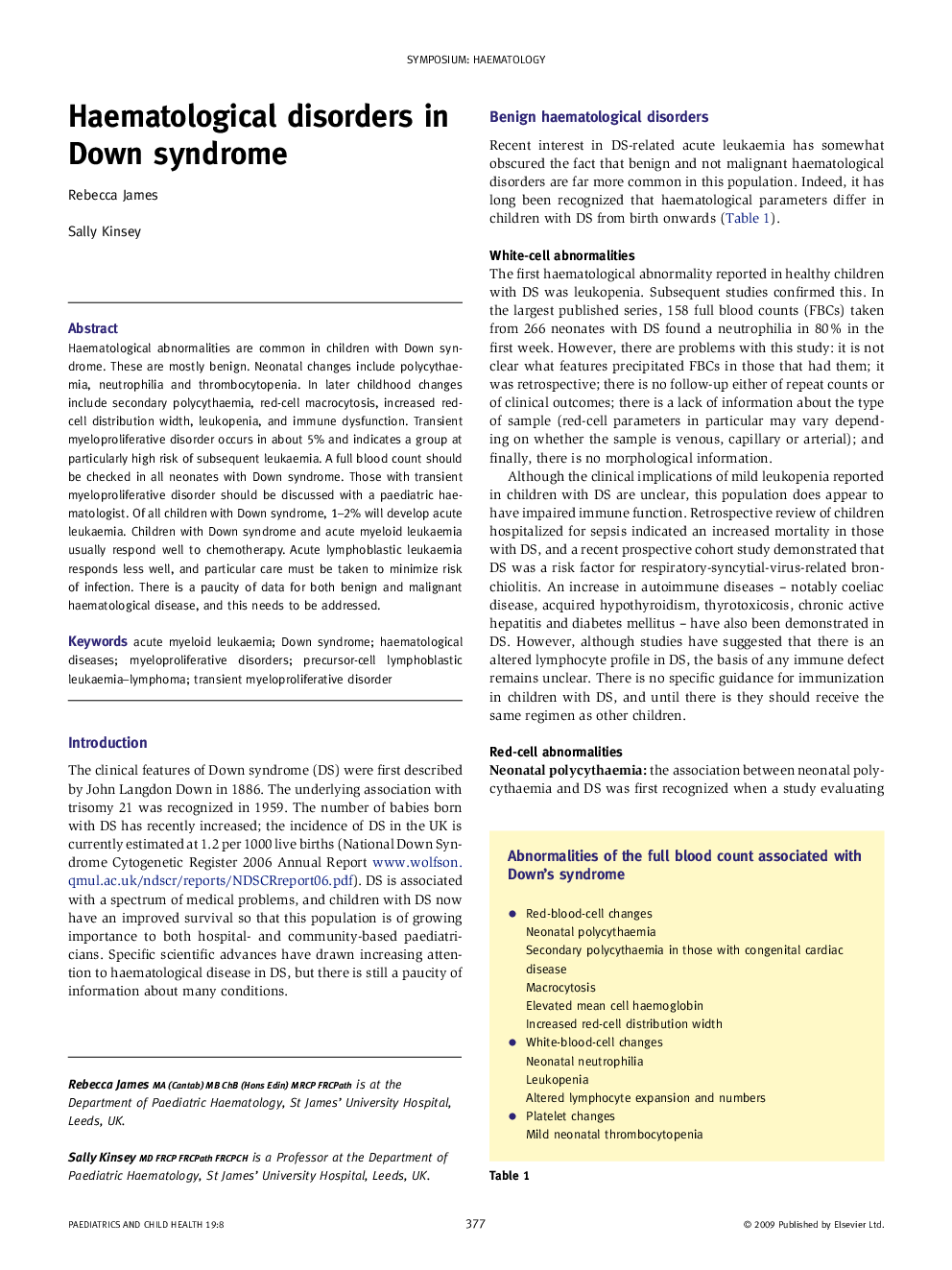| Article ID | Journal | Published Year | Pages | File Type |
|---|---|---|---|---|
| 4173289 | Paediatrics and Child Health | 2009 | 4 Pages |
Haematological abnormalities are common in children with Down syndrome. These are mostly benign. Neonatal changes include polycythaemia, neutrophilia and thrombocytopenia. In later childhood changes include secondary polycythaemia, red-cell macrocytosis, increased red-cell distribution width, leukopenia, and immune dysfunction. Transient myeloproliferative disorder occurs in about 5% and indicates a group at particularly high risk of subsequent leukaemia. A full blood count should be checked in all neonates with Down syndrome. Those with transient myeloproliferative disorder should be discussed with a paediatric haematologist. Of all children with Down syndrome, 1–2% will develop acute leukaemia. Children with Down syndrome and acute myeloid leukaemia usually respond well to chemotherapy. Acute lymphoblastic leukaemia responds less well, and particular care must be taken to minimize risk of infection. There is a paucity of data for both benign and malignant haematological disease, and this needs to be addressed.
